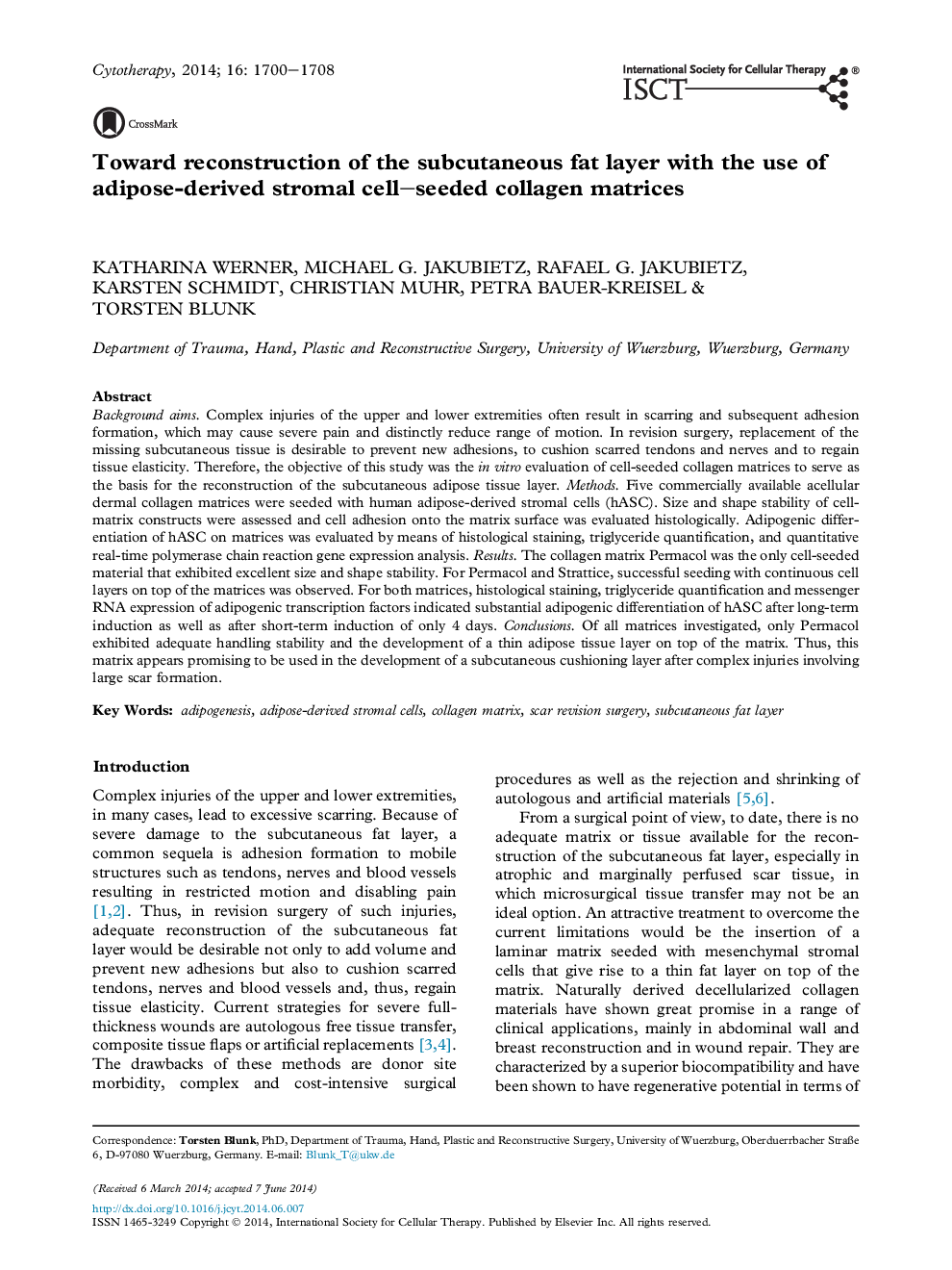| کد مقاله | کد نشریه | سال انتشار | مقاله انگلیسی | نسخه تمام متن |
|---|---|---|---|---|
| 2171949 | 1093511 | 2014 | 9 صفحه PDF | دانلود رایگان |
Background aimsComplex injuries of the upper and lower extremities often result in scarring and subsequent adhesion formation, which may cause severe pain and distinctly reduce range of motion. In revision surgery, replacement of the missing subcutaneous tissue is desirable to prevent new adhesions, to cushion scarred tendons and nerves and to regain tissue elasticity. Therefore, the objective of this study was the in vitro evaluation of cell-seeded collagen matrices to serve as the basis for the reconstruction of the subcutaneous adipose tissue layer.MethodsFive commercially available acellular dermal collagen matrices were seeded with human adipose-derived stromal cells (hASC). Size and shape stability of cell-matrix constructs were assessed and cell adhesion onto the matrix surface was evaluated histologically. Adipogenic differentiation of hASC on matrices was evaluated by means of histological staining, triglyceride quantification, and quantitative real-time polymerase chain reaction gene expression analysis.ResultsThe collagen matrix Permacol was the only cell-seeded material that exhibited excellent size and shape stability. For Permacol and Strattice, successful seeding with continuous cell layers on top of the matrices was observed. For both matrices, histological staining, triglyceride quantification and messenger RNA expression of adipogenic transcription factors indicated substantial adipogenic differentiation of hASC after long-term induction as well as after short-term induction of only 4 days.ConclusionsOf all matrices investigated, only Permacol exhibited adequate handling stability and the development of a thin adipose tissue layer on top of the matrix. Thus, this matrix appears promising to be used in the development of a subcutaneous cushioning layer after complex injuries involving large scar formation.
Journal: Cytotherapy - Volume 16, Issue 12, December 2014, Pages 1700–1708
